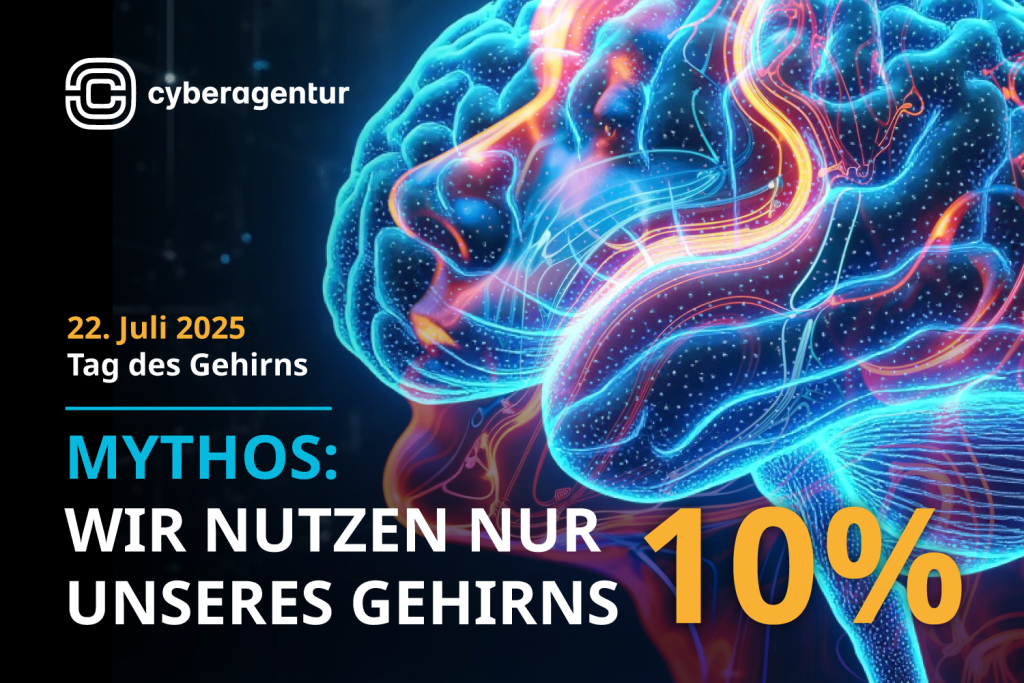
The brain is perhaps the most important and at the same time the most curious organ of the human organism: on the one hand, it is the neuronal control center through which perceptions and sensations are brought together in thoughts and memories and translated into concrete actions and movements. On the other hand, we can only understand the brain by using the brain’s own abilities to study it. The brain is therefore the only organ that can observe itself.
However, when trying to understand the brain and all its complex processes and neuronal circuits, there are numerous myths that permeate our everyday understanding and therefore also shape the way we treat ourselves. We would like to use today’s World Brain Day to get to the bottom of one of the most common myths and show how the hidden potential of neuronal activity can really be harnessed.
Myth: We only use 10% of our brain
The brain is capable of amazing feats. But sometimes we are unable to concentrate or engage in activities that are not intellectually demanding. Many people are familiar with this after getting up: Reaching for the coffee cup is habitualized, looking out of the kitchen window perhaps still stiff and sluggish from tiredness. Doesn’t it make sense to assume that we only use a small part of our brain in such situations?
In line with this consideration, many coaching offers, self-help books or LinkedIn posts that give tips on increasing efficiency at work state that people only use 10% of their brain on average. This means that 90% remains unused and lies idle as lost potential. It is therefore up to you to activate this 90% and unlock your true potential. From an advice perspective, this statement is intended to motivate people and spur them into action. But it is not based on facts and is simply wrong.
In fact, we always use our entire brain. Even in quiet phases – coffee in the morning, a walk in the park, a nap on the couch – our brain is 100% active. Depending on the activity, however, different areas of the brain can be supplied with more blood and therefore put under more strain – for example, the hippocampus in the formation and storage of memories or the motor cortex in the control and execution of voluntary movements. Such additional strain is then reflected in imaging procedures such as magnetic resonance imaging (MRI). However, here too, these areas of the brain never act in isolation, but only in complex interaction with other parts of the brain. In addition, we constantly perform numerous small physical movements – even when we are supposedly at rest – and are involuntarily flooded with thoughts, memories or emotions. The brain therefore does not simply stand still or remain unused in one of these phases.
However, the fact that the brain is always active does not mean that we are always aware of all processes in the brain. Quite the opposite: we can, for example, feel subjectively fit and resilient even though our attention and receptiveness have already noticeably decreased due to little sleep.
These and similar correlations between subjective perception and objectively measurable data can be used to support people in their actions. Zander Labs is currently researching this basic principle in the “Neuroadaptivity for Autonomous Systems” (NAFAS) research project funded by the Cyberagentur with 30 million euros. The aim is to develop a non-invasive, neurotechnological prototype in which the mental states of users are understood and interpreted by a machine. So if you become inattentive or tired at work, the machine could inform you and suggest that you take a short break.
So instead of driving the brain from 10% to 100% capacity with a view to the self-optimization myth, the real potential of neuronal activities lies in making visible the processes that we are not always aware of when performing actions. As Cyberagentur, we see this potential and are trying to tap into it together with Zander Labs.
Author: Dr. Andreas Schönau
